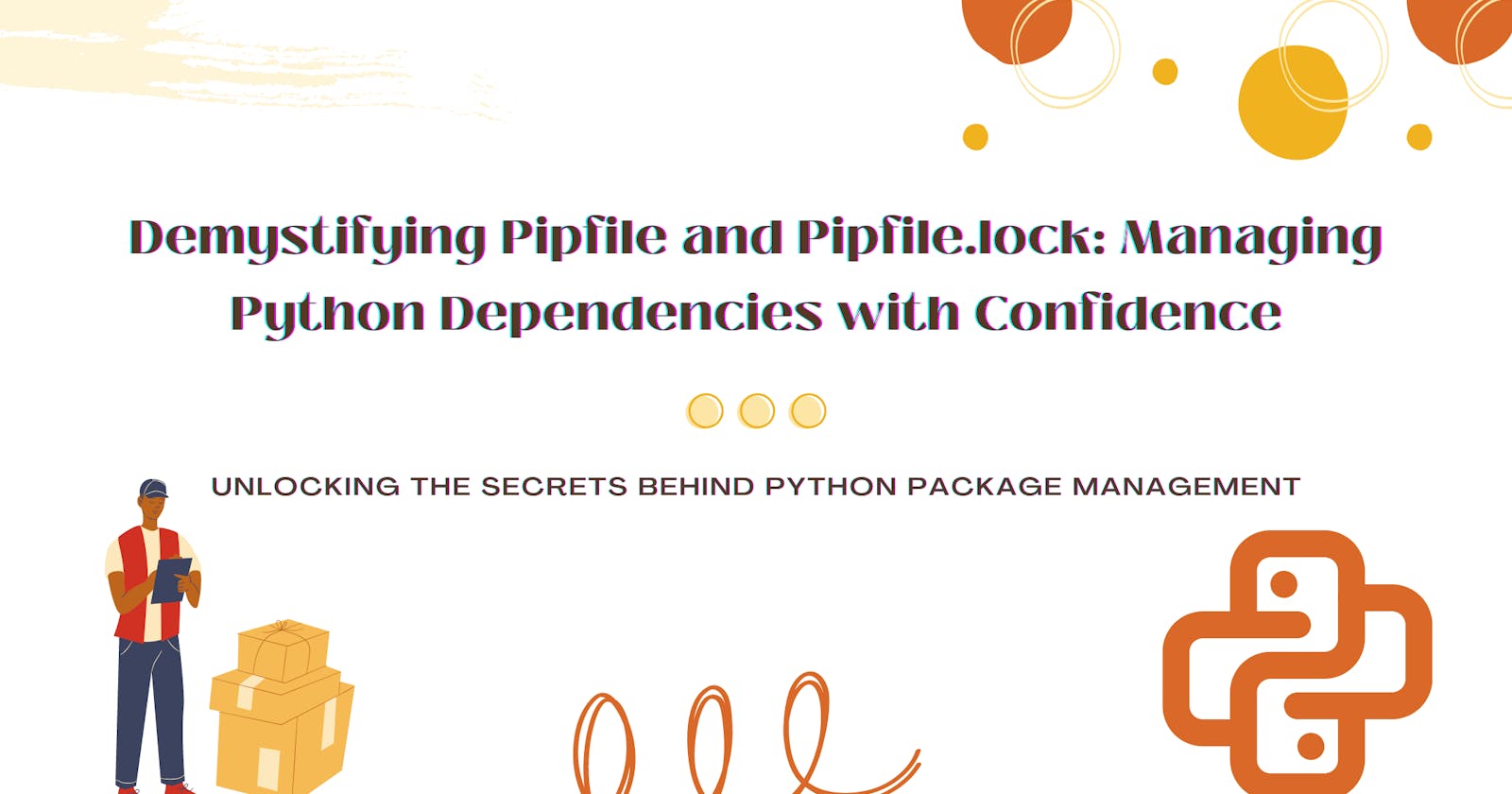Demystifying Pipfile and Pipfile.lock: Managing Python Dependencies with Confidence
Unlocking the secrets behind Python package management
Overview
In this blog post, we delve into the world of Pipfile and Pipfile.lock, two essential files used in Python projects to tame the jungle of dependencies. Discover how these files work together, ensuring consistency and reproducibility in your Python environments. Join us as we unravel the mysteries and equip you with the knowledge to confidently manage your Python dependencies.
How the Pipfile and Pipfile.lock files relate to each other
The Pipfile and Pipfile.lock files are both used in Python projects to manage package dependencies. They are commonly used with the pipenv tool, which provides a higher-level interface for managing virtual environments and package installations.
Pipfile
The Pipfile is a human-readable and editable file that serves as a declarative specification for project dependencies.
It typically resides in the root directory of a Python project.
It contains two main sections: [packages] and [dev-packages]. These sections specify the dependencies required for the project and any development-specific dependencies, respectively.
In the Pipfile, you can specify the package names and versions or even specify a version range using semantic versioning.
The Pipfile can also include additional configuration options, such as specifying Python versions or specifying extra features for packages.
Developers often modify the Pipfile manually to add or update dependencies.
Pipfile.lock
The Pipfile.lock file is automatically generated by pipenv based on the Pipfile when certain operations are performed, such as installing packages or running
pipenv lock.It is a lockfile that provides deterministic and reproducible builds by fixing the exact versions of packages and their dependencies.
The Pipfile.lock file contains a complete snapshot of the dependency tree, including the specific versions of packages and their transitive dependencies.
It should be committed to version control to ensure consistent builds across different environments and when collaborating with other developers.
Pipenv uses the Pipfile.lock file to install the exact versions of packages specified in the lockfile, ensuring consistent installations across different systems.
Summary
the Pipfile is a human-editable file where developers specify the project's dependencies, while the Pipfile.lock is an automatically generated lockfile that ensures deterministic and reproducible builds by fixing the exact versions of packages and their dependencies. The Pipfile.lock file is used by pipenv to install the specified versions of packages and maintain consistency across different environments.

